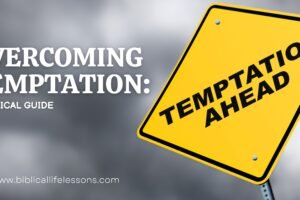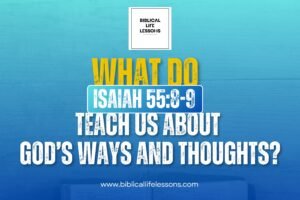The narrative of the Ten Plagues in the book of Exodus is not merely a historical account but a profound lesson in the interplay of divine justice and mercy. These plagues, each a testament to God’s power, were not arbitrary displays of might, but deliberate acts aimed at liberation, retribution, and instruction.
The Unfolding of the Plagues
1. Water Turned to Blood (Exodus 7:14-25)
The transformation of the Nile’s water into blood was not only a striking manifestation of divine power, but a symbolic act. It was a judgment on Egypt’s dependence on the Nile, a force they deified. The lesson: God can dismantle even the strongest foundations of human trust and reliance.
2. Frogs (Exodus 8:1-15)
The plague of frogs, invading every inch of Egyptian life, showcased the relentless persistence of divine judgment. It also revealed the futility of seeking refuge in worldly comforts when under divine scrutiny.
3. Gnats or Lice (Exodus 8:16-19)
The sudden appearance of gnats was an embodiment of the idea that even the smallest and seemingly insignificant things can cause immense discomfort. It illustrated that God’s judgment can be swift and unexpected.
4. Flies (Exodus 8:20-32)
This plague intensified the discomfort, demonstrating that attempts to escape divine judgment through mere human effort are futile. The lesson: True deliverance comes from aligning with God’s purpose.
5. Livestock Diseased (Exodus 9:1-7)
The livestock were crucial to Egypt’s economy and sustenance. Their affliction was a direct hit on Egypt’s pride and a stark reminder of God’s power over economic security.
6. Boils (Exodus 9:8-12)
The plague of boils underlined that God’s judgment spares none, including the powerful. It showed that no one is beyond the reach of divine justice.
7. Hail (Exodus 9:13-35)
The hailstorm was an unmistakable demonstration of God’s control over nature. It was a reminder that even the elements obey His command.
8. Locusts (Exodus 10:1-20)
The locust invasion served as a metaphor for the relentless consumption of resources when not aligned with God’s purpose. It urged Egypt to reconsider their stance.
9. Darkness (Exodus 10:21-29)
The thick darkness enveloping Egypt highlighted the contrast between God’s light and the world’s darkness. It was an invitation to seek the true Light.
10. Death of the Firstborn (Exodus 11:1-12:36)
The culmination of the plagues was the most devastating. It underscored that true freedom often requires a profound sacrifice. The lesson: Liberation comes at a cost.
Life Lessons from the Plagues
- Divine Purpose Surpasses Human Comfort: The plagues teach us that God’s higher purpose may disrupt our comfort zones, but it leads to true liberation.
- The Folly of Human Pride: Egypt’s pride was shattered by each plague. It warns against the arrogance of considering oneself invincible.
- Repentance Opens the Door to Mercy: Even in the midst of judgment, there is room for repentance. God’s mercy is extended to those who turn towards Him.
- The Importance of Alignment: The plagues reveal the importance of aligning with God’s purpose. Liberation comes when we embrace His plan.
In conclusion, the Ten Plagues serve as a vivid tableau of God’s justice, mercy, and the intricate interplay between the two. They stand as a timeless lesson in the divine narrative, urging us to align ourselves with His purpose for true liberation.
Subscribe for Daily Email Devotionals











